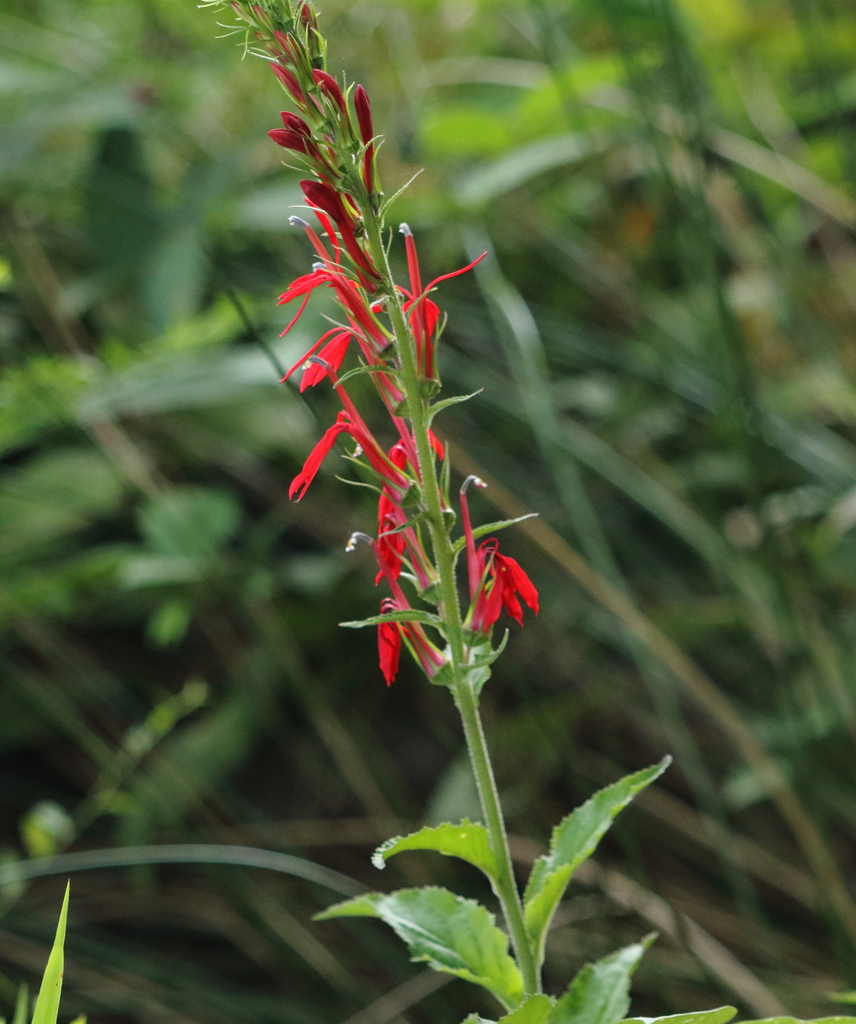
The seed swap will be here before we know it! How do I remember where my natives are and when to collect? One way to mark the location of plants whose seed you wish to collect is to flag their spot. Flags are readily available and re-usable. Flag the plant while it is in bloom. For the super-organized, take a note to return 3-6 weeks later to collect seed, otherwise flag plants along your regular garden meander or walking path. Once the bloom has been shed, you can bag the developing seed to protect it from being eaten or dropping. Bagging it before the bloom drops risks rot since most most blooms contain a high percentage of water. Remember to collect only from your own garden or else get permission and collect no more than 10% of the available seed. Here are a few of the many blooming plants whose seeds will soon be available for collection:
- Cardinal Flower (Lobelia cardinalis): Striking red spikes often near wetlands (at right)
- Many goldenrods (Solidago spp.): An excellent late-season nectar source
- New York Ironweed (Vernonia noveboracensis): Known for its bright purple blooms and ability to attract butterflies.
- Blue Lobelia (Lobelia siphilitica): Thrives in moist areas with partial shade
- White Turtlehead (Chelone glabra): An August-blooming perennial with white or pink flowers. White Turtlehead is a host plant for the Baltimore checkerspot butterfly.
- Joe Pye Weeds (Eutrochium spp.): Attracts and supports pollinators like bees and butterflies with its purplish-pink flowers.
- Spotted Phlox or Wild Sweet William (Phlox maculata): Supports a wide variety of pollinators; blooms through September.
